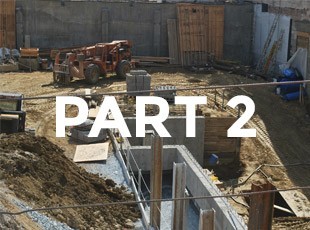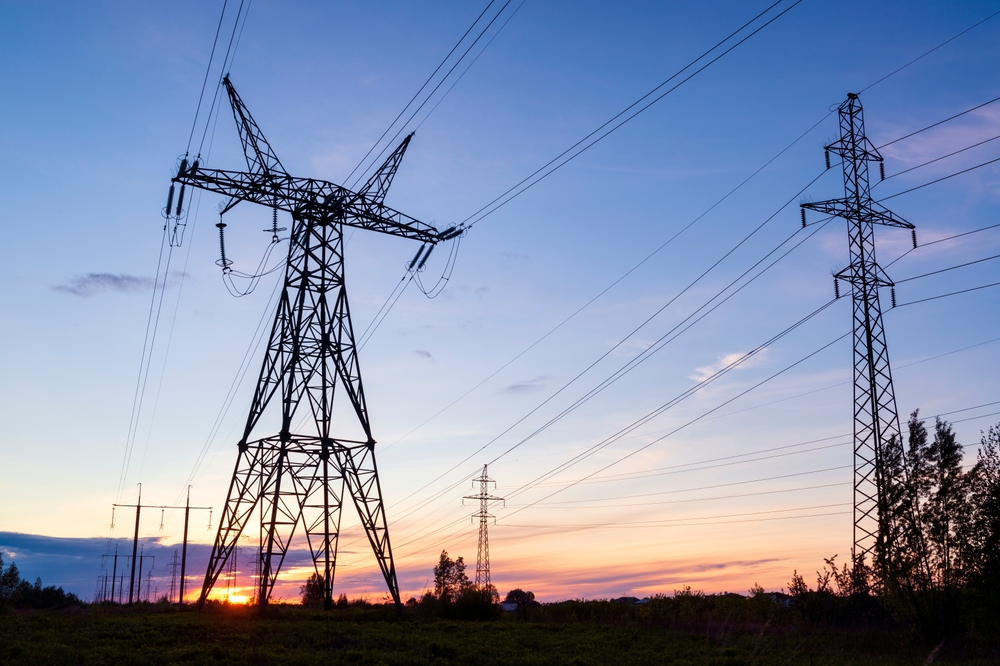After the recently released OSHA Excavation and Trenching Safety guide, which clarified the standards in excavation and provided tips for general contractors and others in construction working in and around trenches.
This guide provided a plethora of information, covered in our introduction article on the topic. But today, we would like to talk about one of the pivotal facets of the planning process: Understanding soil classifications and types of trench collapses that can occur in different composition makeups.
During the planning process, and during the excavation process, the trained and competent person will be tasked with classifying soil and rock deposits as:
- Stable Rock
- Type A Soil
- Type B Soil
- Type C Soil
Types of Rock and Soil Classifications
Stable Rock
“Stable rock” means natural solid mineral matter that can be excavated with vertical sides and remain intact while exposed.
Type A Soil
“Type A” means cohesive soils with an unconfined, compressive strength of 1.5 ton per square foot (tsf) (144 kPa) or greater. Examples of cohesive soils are:
- Clay,
- Silty clay
- Sandy clay
- Clay loam and
- In some cases, silty clay loam and sandy clay loam.
Cemented soils such as caliche and hardpan are also considered Type A.
Exceptions
No soil is Type A if it is fissured or has been previously disturbed. Examples
- The soil is fissured
- The soil is subject to vibration from heavy traffic, pile driving, or similar effects
- The soil has been previously disturbed
- The soil is part of a sloped, layered system where the layers dip into the excavation on a slope of four horizontal to one vertical (4H:1V) or greater
- The material is subject to other factors that would require it to be classified as a less stable material.
Type B Soil
Type B Soil can be defined as any of the following:
- Cohesive soil with an unconfined compressive strength greater than 0.5 tsf (48 kPa) but less than 1.5 tsf (144 kPa); or
- Granular cohesionless soils including:
- Angular gravel (similar to crushed rock)
- Silt
- Silt loam
- Sandy loam
- In some cases, silty clay loam and sandy clay loam.
- Previously disturbed soils except those which would otherwise be classed as Type C soil.
Disturbed Type A Soils
Furthermore, soils listed in the ‘exceptions to type A’ due to fissure, vibration, or slope are listed in type B:
- Soil that meets the unconfined compressive strength or cementation requirements for Type A, but is fissured or subject to vibration; or
- Dry rock that is not stable; or
- Material that is part of a sloped, layered system where the layers dip into the excavation on a slope less steep than four horizontal to one vertical (4H:1V), but only if the material would otherwise be classified as Type B.
Type C Soil
“Type C” means:
- Cohesive soil with an unconfined compressive strength of 0.5 tsf (48 kPa) or less; or
- Granular soils including gravel, sand, and loamy sand; or
- Submerged soil or soil from which water is freely seeping; or
- Submerged rock that is not stable, or
- Material in a sloped, layered system where the layers dip into the excavation or a slope of four horizontal to one vertical (4H:1V) or steeper.
Before work each day, or when any trench conditions change, a competent person must test the soil to ensure the soil is safe and that the safety measures are taken (shoring, sloping, etc.).
The competent person is to perform multiple tests:
- Visual (is the soil coming out in clumps, is there water, is the soil fissured, etc.)
- Unconfined compressive strength means the load per unit area at which a soil will fail in compression. It can be determined by laboratory testing or estimated in the field using a pocket penetrometer, thumb penetration tests, or other methods.
- Plasticity: Rolling a piece of moist soil to a 1/8”
- Thumb penetration: Push thumb into clump of soil
- Pocket Penetrometer: Provides numerical value (like a tire valve) to the unconfined compressive strength of a sample.
Types of Trench Cave-Ins
When looking at different forms of soil, knowing where the softer ground sits and what to look out for is another part of designing a solution. Hard soil (Type A) is less likely to give way to the pressure of traffic while soft soil (Type B, Type C) is provides a point in which cave-ins could occur. To highlight the different types of trench cave-ins, Underground Focus Magazine highlighted which points of soil weakness cause cave-ins.
The following is an example of why the competent person needs to test soil at multiple depths to ensure that soft zones are accounted for.
Layered Soil Failure
This type of failure occurs when one side of the soil is strong near the surface and weak below, and the other side is weak near the surface and strong below.
(via)
Soft Zone Failure
When a ridge of weak soil sits between two strong layers, the once stable area to have a weak foundation, leading to collapse.
(via)
Sloughing/Air Drying
In windier areas or dry locations, sloughing occurs when a once-stable trench wall becomes so dry that it becomes a weak area. This is an example of why the competent person is to regularly test soil consistency.
(via)
Soft Pockets
While excavating, you may find small pockets of soft, sandy soil, which give way to stable ground, creating weak pockets that in time will lead to a trench collapse.
(via)
Wedge Failure
Gravity plus time could equal tragedy. When working with high traffic or vibration, cracks will begin to form atop the ground and even once-stable ground could slide in an angular fashion down into the trench. This highlights the reasons that no matter the tested strength, traffic and vibration cause all soil to be considered Type B.
(via)
Rotational Failure
Caused by a soft pocket, the wedge, much like the image above, does not slide in an angular fashion. Instead, the cracks give way to a fracture at the bottom of the trench, careening down in a circular fashion.
(via)
More Information
Your organization has the moral and legal obligation to protect workers, and protecting the lives of workers in trenching and excavation is pivotal to ensuring the productivity, engagement, and profitability that your everyone from executive to contractor deserves. Optimum Safety Management can help you to not only ensure compliance but to reap the benefits of a complete safety management system that includes everything from management buy-in to ongoing training. Learn more by contacting us using this form, calling 630.759.9908 or calling our safety helpline for immediate assistance at 888-70-SAFE-T (888.707.2338)















